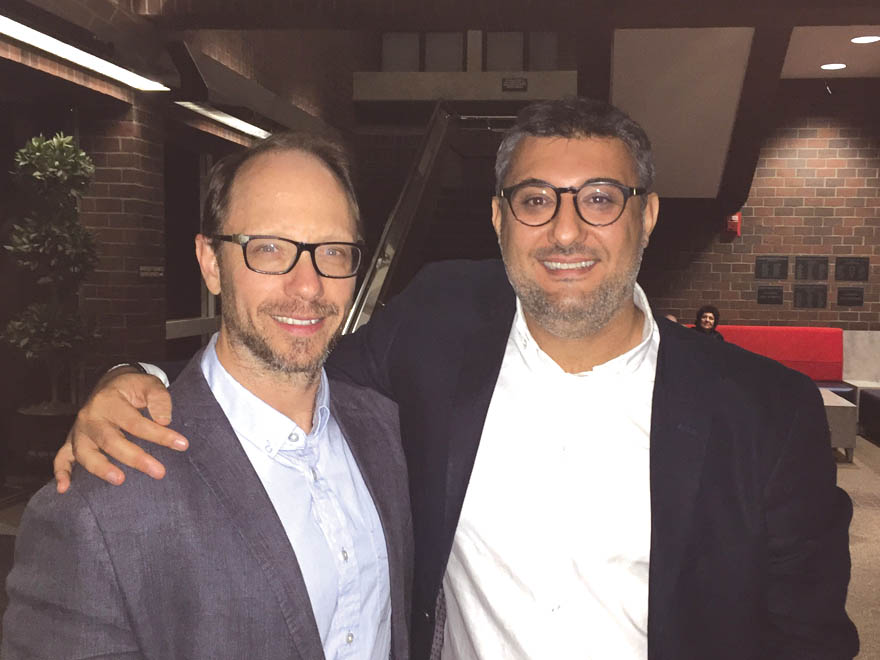
Photo: Barlow Der Mugrdechian
Annie Rubio
Editor
Behind every genocide are perpetrators, ones who promote and contribute to the acts of mass violence. However, a majority of these perpetrators are not top military officials, but rather the mass population who idly stands by. This has become a focus of Kazan Visiting Professor Dr. Ümit Kurt’s research: how such “ordinary” people can become involved in genocidal strategies. Although he has studied its application in several instances of mass violence, he found a large gap when looking at Armenian Genocide studies.
Dr. Kurt, in his second lecture as Kazan Visiting Professor for the Fall semester, analyzed the motivations of such “ordinary” perpetrators and applied them to several perpetrators living in Aintab during the Armenian Genocide. His talk, “Proactive Local Perpetrators: Mehmet Yasin (Sani Kutluğ) and Ali Cenani,” was given on Tuesday, October 16.
As Dr. Kurt said, “this story is not only the story of the big guys, it’s the story of every kind of ordinary guy.” Before he discussed his research, Dr. Kurt framed his lecture with an important clarification that explaining the actions of these men does not justify them by any means. “We are just trying to understand how any kind of normal, ordinary person can become a murderer.”
To begin his analysis, Dr. Kurt discussed the motivations of these “ordinary” perpetrators. While there was a strong anchor in ideological reasoning, there were also prospects for material gain as well. Muslims in Aintab were eager to act on deportation orders so that they might advance their own personal interests. “Participation of local people is generally considered a necessary condition to ensure the effectiveness of genocidal policies,” Dr. Kurt explained. With this in mind, he moved on to examining specific members within the Aintab branch of the Committee of Union and Progress (CUP).
Dr. Kurt analyzed the actions of Ali Cenani, the president of the local CUP branch. Cenani organized massive deportations of Armenians from Aintab, even those who were specifically exempted from such orders. He would specifically draw up false charges in order to frame the Armenians as a dangerous force. Cenani also distributed weapons to the Muslim community and instigated massacres in Aintab. Throughout all of this, he was collecting personal property of the Armenians.
Similar actions can be seen in the life of Mehmet Yasin, a military dispatcher at the railway station near Aintab. He was responsible for supervising convoys of Armenians and their deportation by rail. However, the reality was cruel treatment at the hand of those in charge. Yasin would not only allow massacres of the deportees, but also participated himself, collecting their personal property after the fact. Yasin was also obsessed with maintaining deniability, both physically and culturally. He prevented any Armenians from creating a paper trail, going so far as imprisonment and death. Dr. Kurt commented that this “sends a message to other Armenians who keep records.” Yasin also wanted to go so far as changing place names, both of villages and their people, in order to remove traces of a multinational Turkey.
Dr. Kurt described the role of “ordinary” perpetrators as part of a symbiotic relationship. “Genocidal process may be designed by the central authority, but it’s inevitably guided by the locality.”
Without the efforts of local officials such as Cenani and Yasin, the genocidal strategies could not occur. It was not a special role, nor did it require unique circumstances. “It could have been me, it could have been you, and it could have been everyone.”
 Hye Sharzhoom Armenian Action
Hye Sharzhoom Armenian Action